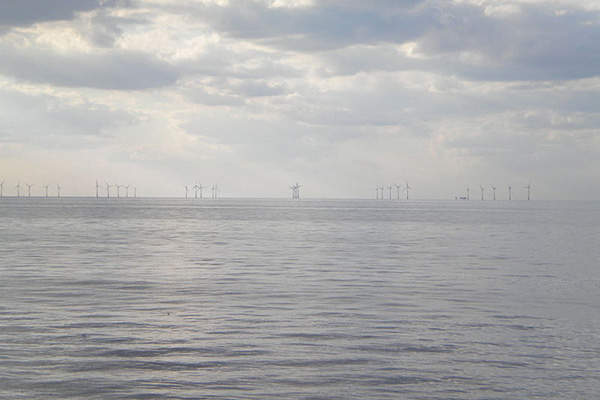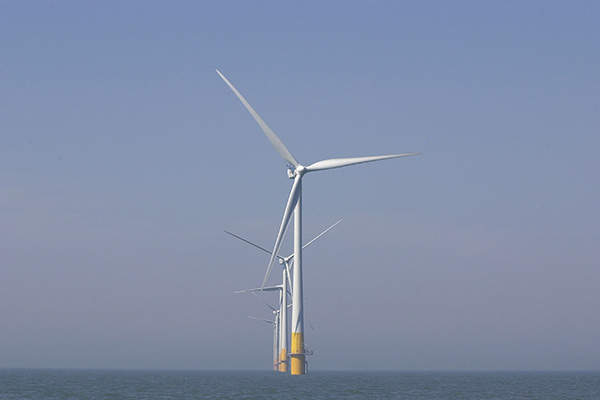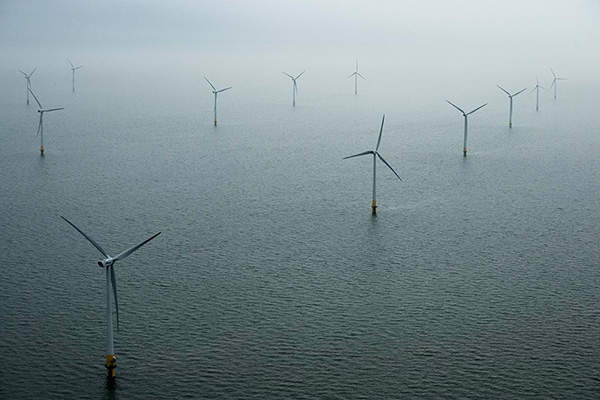The 90MW Kentish Flats wind farm, owned and operated by Vattenfall, is located off the coast of Kent, UK, about 8.6km north of Herne Bay and 9.5km north of Whitstable. The installed capacity of the offshore wind farm was extended by another 49.5MW.
The existing Kentish Flats offshore wind farm commenced operations in September 2005 and permission to extend the wind farm was granted in February 2013. Main offshore construction works for the extension project began in May 2015.
The wind farm extension project will generate around 150GWh a year of clean electricity, which will be enough to power up to 35,000 UK households while offsetting up to 64,500t of CO₂ emissions every year.
All 15 turbines of the extension project were connected to the National Grid in September 2015.
Kentish Flats offshore wind farm location and make-up
Related content
Thanet Offshore Wind Farm, Kent
The Thanet Offshore Wind Farm is located 11km from the coast of Thanet in Kent, UK.
Located on the southern side of the outer Thames Estuary, the existing Kentish Flats wind farm was developed with an investment of £105m ($165m). At the time of its commissioning, Kentish Flats was the UK’s biggest wind farm and featured the largest wind turbines in the country.
Spread over 10km², the wind farm comprises 30 Vestas V90 3MW turbines installed at a water depth of 5m. Each wind turbine has a rotor diameter of 90m and hub height of 70m, with the turbines connected to inter-array cables. Three buried subsea export cables, making landfall at Hampton Pier, transmit the generated power to the shore. The electricity is transmitted to the national grid from an onshore sub-station at Herne Bay.
The Kentish Flats wind farm generates more than 280GWh of electricity a year, which is enough to meet the electricity needs of 61,000 UK households.
Offshore wind farm extension project
The offshore wind farm extension project was approved as part of the Crown Estate’s Round 2.5 programme. The 7.77km² site is located 7.8km away from the north Kent coast, adjacent to the existing Kentish Flats wind farm.
The wind farm extension comprises 15 Vestas V112 wind turbines, each with a rated capacity of 3.3MW. Each turbine, with a 120m diameter rotor and 54.65m-long blades, provides a swept area of 9,852m². The cut-in and cut-out wind speeds for the turbines are 3m/s and 25m/s respectively.
The turbines were mounted over towers fitted to 6m-diameter transition pieces, with each transition piece weighing 160t and fixed to a 6m-diameter monopole foundation laid up to 45m-deep inside the seabed.
Offshore components of the project were installed using jack-up or floating dynamically positioned vessels. The subsea cables were buried in the seabed using ploughing or water jetting techniques.
The wind farm extension project is anticipated to be completed at a cost of more than £150m.
Wind turbine energy distribution and grid connection
The inter-array cables and subsea export cabling for the wind farm extension project is estimated to be 30km-long in total. The 33kV inter array cables connecting all 15 turbines are connected with the export cables, which transmit power to the shore near Hampton Pier, at the western end of Herne Bay.
From there, electricity is supplied to the Red House Farm substation on Thornden Wood Road, Herne Bay, for transmission to the national grid.
North Kent wind farm operation and management
The Kentish Flats extension project is operated and maintained from Vattenfall’s existing maintenance base on the west quay of Whitstable Harbour.
Microprocessor controls are used to control the turbines, which are monitored by a centralised supervisory control and data acquisition (SCADA) system. The SCADA system and other communication requirements are linked to the onshore communication network via optical fibre cables (OFC).
All the turbines are equipped with internal emergency stop facilities, which are activated by local control systems in the event of either certain component or system malfunctions.
Contractors involved with the Kentish Flats extension project
Vestas supplied, installed and commissioned the offshore turbines for the extension project. It is also responsible for turbine operation and maintenance for a period of five years.
Belgium-based DEME Group subsidiary GeoSea was awarded the engineering, procurement and construction (EPC) contract for the turbine foundations, as well as for installing the wind turbines of the extension project, in December 2013.
General Cable Corporation’s subsidiary Norddeutsche Seekabelwerke (NSW) supplied 30km of medium-voltage AC (MVAC) subsea cables for the extension project. Bohlen & Doyen was contracted for the installation of the offshore array and export cables.
J Murphy & Sons was awarded the contract for the installation of the onshore cables. The contract for providing a geographic information system (GIS), data management system and online GIS viewer for the extension project was awarded to SeaRoc.







